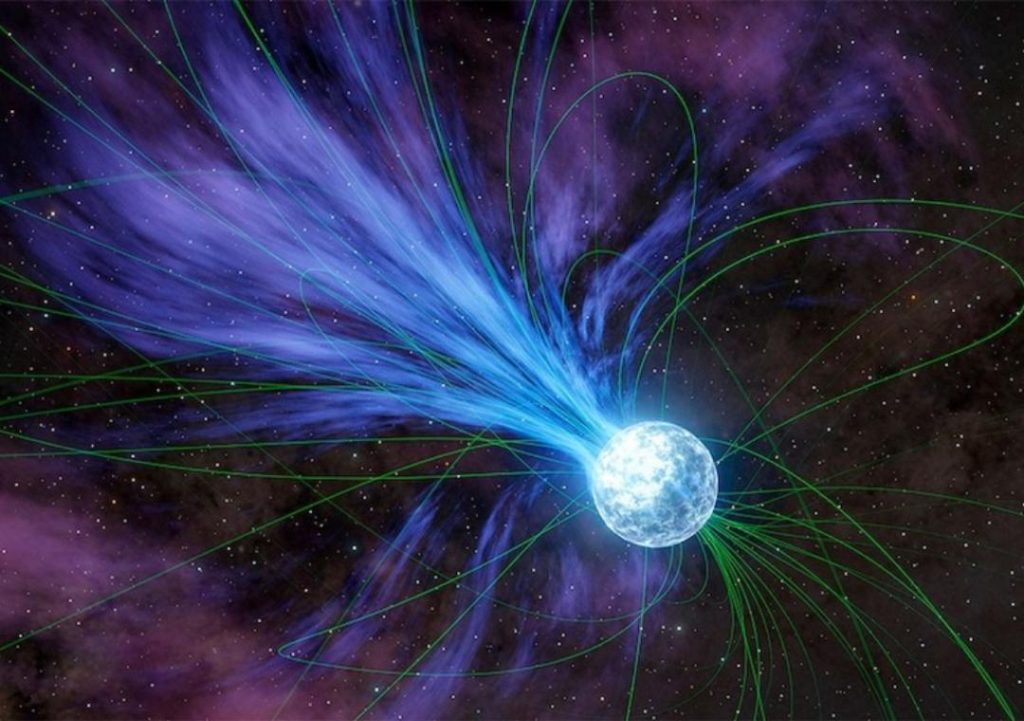
Gold & Platinum Created Through Neutron Stars’ Explosions: Study
For centuries, humans have been fascinated by the origin of precious metals like gold and platinum. Scientists have long believed that these elements were created in the hearts of stars, but the exact process was shrouded in mystery. Recently, a groundbreaking study led by Columbia University student Anirudh Patel has shed new light on the matter, revealing that magnetars, or highly magnetized neutron stars, played a crucial role in creating these elements.
According to the study, magnetars exploded and released flares that contained gold and platinum, among other elements. This cosmic event occurred over 20 years ago, and its implications are far-reaching, rewriting our understanding of the origin of these precious metals.
The Mystery of Gold and Platinum
Gold and platinum have long been prized for their rarity and beauty, but their creation has been a topic of debate among scientists. One theory is that these elements were formed in the hearts of stars, through a process known as nucleosynthesis. However, this process is not sufficient to explain the abundance of these elements in the universe.
In recent years, scientists have turned their attention to magnetars, which are a type of neutron star with extremely strong magnetic fields. These stars are thought to be the result of massive stars collapsing under their own gravity, with the resulting explosion creating a dense, spinning remnant.
The Role of Magnetars in Creating Gold and Platinum
The study led by Anirudh Patel suggests that magnetars played a crucial role in creating gold and platinum through their explosions. When a magnetar explodes, it releases a massive amount of energy in the form of flares, which contain a variety of elements, including gold and platinum.
The explosions occur approximately once per decade in the Milky Way and annually across the observable universe. This means that the creation of gold and platinum is a relatively frequent event in the universe, with new stars and planets forming as a result.
The Cosmic Event: A Study of the 1998 Tunguska Event
The study focused on the 1998 Tunguska event, a massive explosion that occurred in Siberia, Russia. The event was caused by a magnetar explosion, which released a massive amount of energy and created a shockwave that destroyed a large area of forest.
The researchers analyzed the debris from the explosion and found that it contained a variety of elements, including gold and platinum. This suggests that the magnetar explosion created these elements through the fusion of lighter elements in the star’s core.
Implications for Our Understanding of the Universe
The findings of this study have significant implications for our understanding of the universe. They suggest that magnetars play a crucial role in the creation of gold and platinum, and that these elements are more abundant in the universe than previously thought.
Furthermore, the study highlights the importance of magnetars in shaping the universe as we know it. These explosions can create new stars and planets, and can even affect the formation of galaxies.
Conclusion
In conclusion, the study led by Anirudh Patel has shed new light on the origin of gold and platinum. The findings suggest that magnetars, or highly magnetized neutron stars, play a crucial role in creating these elements through their explosions.
This discovery has significant implications for our understanding of the universe, and highlights the importance of continued research into the mysteries of the cosmos. As scientists, we continue to uncover the secrets of the universe, and the discovery of gold and platinum in magnetar explosions is just the latest chapter in this ongoing story.
Source:






